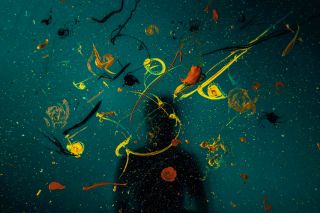Creativity
Research Shows Neurodivergent Individuals Excel Creatively
There are many benefits of focusing on the strengths of neurodivergent individuals.
Posted December 20, 2022 Reviewed by Abigail Fagan
Key points
- Research shows that there's a correlation between ADHD and entrepreneurship.
- Research shows individuals with autism commonly excel musically.
- There are higher rates of dyslexia among university art students than the general student population.
Neurodiversity is a term that describes the wide variation of individuals' brain functioning within the human population. Although there is an abundance of neurodiversity within human beings, there are believed to be standards for normal neurological functioning. Individuals who fall within these standards are considered neurotypical. Neurodivergence is a term used to describe a divergence in mental or neurological functioning that differs from what is considered typical.

Neurodivergence is typically considered within the context of psychological and developmental hindrances. The DSM-5 has multiple diagnoses, such as autism spectrum disorder (ASD), attention deficit hyperactivity disorder (ADHD), or dyslexia, that describe the symptoms associated with different examples of neurodivergence.
It has long been speculated that neurodivergence is associated with increased levels of creativity, and now research is beginning to prove this concept. Their brain’s divergence from the norm allows neurodivergent individuals to perceive and experience the world in unique ways that naturally lend itself to artistic or creative pursuits.
Research shows that creativity manifests in different ways across neurodivergent populations. Individuals with ASD may excel in one area while individuals with ADHD may excel in another. The rest of this post explores the ways that creativity commonly (but not always) manifests across diagnoses recognized by the DSM-5.
ADHD and Entrepreneurship
Research has shown that individuals with ADHD have a more intuitive cognitive style. An intuitive cognitive style means that an individual unconsciously compares a current situation with situations that have happened in the past, generating a “gut reaction” for the potential outcome of a given course of action. This cognitive style is commonly seen among individuals who end up in creative careers.
Individuals with ADHD score high on personality tests in areas such as a need for achievement, autonomy, and creativity, as well as moderate willingness to take risks. Individuals with ADHD also demonstrate high levels of idea generation and elaboration. Between the tendency toward intuitive cognition and these personality traits, research has found a strong correlation between individuals with ADHD and entrepreneurship.
Autism and Music
Traditional creativity tests are thought to underestimate the levels of creativity in individuals with ASD. The tests are conducted in a constrained way that may not be conducive to the needs of individuals with ASD. These tests typically have time limits and are taken with paper and pencil. The testing environment may be overstimulating and the test itself may overlook individual’s visuospatial ability.
However, researchers have been digging into alternative ways to measure the creative abilities of individuals with ASD. The findings are demonstrating that those with ASD are inhibited in fluency and flexibility but display high levels of detail and originality. The level of detail appears to be linked to areas of linguistics and musicality.
A research study looked at musically naïve children compared to a control group of musically naïve mental-aged-matched children. The researchers compared their ability to identify and remember single-note frequencies or speech sounds. The results showed that both groups could recall speech sounds equally as well, but those with ASD had a superior ability for single-note identification.

Dyslexia and Originality
Dyslexia is a learning disability commonly associated with poor reading and writing abilities. However, research is beginning to indicate that individuals with dyslexia excel in certain areas of creativity. Results show that dyslexia is strongly correlated with higher rates of idea generation and originality. Research also shows that individuals with dyslexia tend to be spatially gifted and hold an ability to envision objects in 3-D and various other ways.
A research study tried proving the correlation between creativity and dyslexia by looking at the prevalence of dyslexia among university art students. This study proved higher reported rates of dyslexia among art students than the general student population.
The Takeaway
Neurodivergence is sometimes understood within a pathological lens associated with the symptoms of diagnoses found in the DSM-5. However, neurodivergent individuals excel in many areas that neurotypical individuals don’t. One of these areas is creativity.
There are benefits to pointing out the unique abilities of neurodivergent individuals. By focusing on the strengths of these populations, mental health professionals can instill a learned resiliency and self-confidence, rather than overemphasizing a deficit mindset.
References
Cockcroft, Kate, and Melanie Hartgill. "Focusing on the abilities in learning disabilities : dyslexia and creativity." Sabinet, vol. 8, no. 1, 1 July 2004, https://doi.org/10520/EJC31680.
Heaton, Pamela, et al. "Autism and Pitch Processing: A Precursor for Savant Musical Ability?" Music Perception, vol. 15, no. 3, Apr. 1998, pp. 291-305, https://doi.org/10.2307/40285769.
Marissa L. Diener, Cheryl A. Wright, Katherine N. Smith & Scott D. Wright (2014) Assessing Visual-Spatial Creativity in Youth on the Autism Spectrum, Creativity Research Journal, 26:3, 328-337, DOI: 10.1080/10400419.2014.929421
Masataka, N. (2020). Were Musicians As Well as Artists in the Ice Age Caves Likely with Autism Spectrum Disorder? A Neurodiversity Hypothesis. In: Masataka, N. (eds) The Origins of Language Revisited. Springer, Singapore. https://doi.org/10.1007/978-981-15-4250-3_9
Moore, C. B., McIntyre, N. H., & Lanivich, S. E. (2021). ADHD-Related Neurodiversity and the Entrepreneurial Mindset. Entrepreneurship Theory and Practice, 45(1), 64–91. https://doi.org/10.1177/1042258719890986
Pennisi, P., Giallongo, L., Milintenda, G. et al. Autism, autistic traits and creativity: a systematic review and meta-analysis. Cogn Process 22, 1–36 (2021). https://doi.org/10.1007/s10339-020-00992-6
Wolff, Ulrika, and Ingvar Lundberg. "The prevalence of Dyslexia among art students." Dyslexia: An International Journal of Practice and Research, vol. 8, no. 1, Mar. 2002, pp. 34-42, https://doi.org/10.1002/dys.211.




